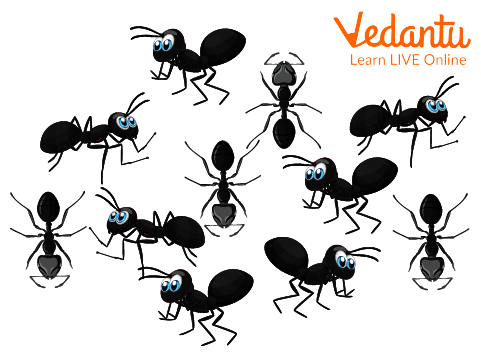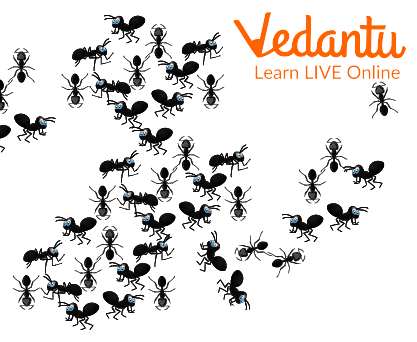




How Do Ants Build and Live in Their Habitats?
We should learn about ants for so many reasons, which compete with humans as the main living form on Earth, from the hundreds of naturalists, ecologists and other keen observers as well as the world's limited number of ant scientists. Ants are quite prevalent and may be seen practically anywhere. According to one calculation, the mass of all the ants in the world united would be roughly equal to the weight of all people. So let’s go ahead and explore some interesting facts about ants.
Habitat of Ants
The majority of ants live in nests, which can be formed of twigs, sand or gravel and can be erected above ground, in the ground, or under a rock. Large, black, and common in North America, carpenter ants reside in ancient logs and timbers. Some organisms inhabit the inner stems of weeds or trees. In the jungles of Africa, tailor or weaver ants build nests out of leaves and other similar materials that are bound together by silk produced by the larvae.
Dolichoderus is a family of ants that constructs its nest from fragments of animal waste. The widely dispersed pharaoh ant is a little yellowish insect that constructs its nest either outside in warm climates or inside buildings in cool temperatures.

Ants
Information about Ants
Given below is some crucial information about ants.
Ant Habitat
Depending on their species, different ants may reside underground, on the ground in mounds, or even in trees or other wooded structures.
When do They Die?
Ant queens live a long time—about 30 years, on average. But unlike the males, who might live as little as a few weeks, female worker and soldier ants have a lifespan of roughly one to three years.
What Do They Eat?
The varied diet of ants, who are omnivore insects, includes meat, seeds, fruits, fungi, and sugary liquids like nectar. Some termites and ant species are preyed upon by ants.

Ant Colonies
Fun Facts about Ants
Now, let’s learn some fun facts about ants:
Little devils, ants are strong! In actuality, they can lift 50 times as much as they weigh!
The warrior ant serves as the Queen's army pretty literally. They prevent intruders from getting into the nest by blocking doors with their heads.
The number of ant species on our globe is staggering—12,000!
Compared to humans, they have a higher muscle-to-body ratio.
The combined mass of all people and all ants in the world is exactly the same.
They are beneficial creatures! They frequently transport other insects across plants. But don't be duped—they only desire the honey of the insects!
Ants are master slavers! They regularly "kidnap" ants from neighbouring colonies and make them perform laborious tasks.
It's estimated that ants have been around for 130 million years on this planet.
The ant species "Pheidole harrisonfordi" bears Harrison Ford's name.
They were the first farmers in history. Agriculture has existed there longer than humans have!
They hunt for food by following the pheromone trails left by other ants.
In an ant colony, all of the employees are female. Each of these females is sterile.
Summary
In this article, we learned that ants are present all across the planet, however, they are more prevalent in hot climates. They are often yellow, brown, red, or black and are between 0.1 and 1 in (2–25 mm) long. Ants consume both plant and animal matter; some even "farm" fungi by nurturing them in their nests or "milk" aphids for sustenance. We also learned that queens, males, and workers—including soldiers—make up an ant colony's three castes, which interact in a highly sophisticated society akin to that of honeybees. The North American carpenter ant, the tropical army ant, and the stung fire ant are all well-known ant species. We hope you enjoyed reading this article, in case of any other doubts, feel free to ask in the comments.
FAQs on Essential Facts About Ants’ Habitats
1. What is the ant's past?
Between 140 and 168 million years ago, as during the Jurassic, ants first evolved on Earth. At that time, dinosaurs were still roaming the planet and most plant life was made up of species that produced cones and spores, such as ferns and pine trees.
2. How can ants teach us something?
Ants show us the importance of patience. Being able to adapt to the attitude of Ants is the definition of self-motivated.
3. What does the ant symbolise?
They stand for strength, determination, perseverance, toughness, stamina, devotion, teamwork, truthfulness and power in many cultures. Ants in nature are incredibly strong for their little size. They can actually support nearly 20 times their own weight.









